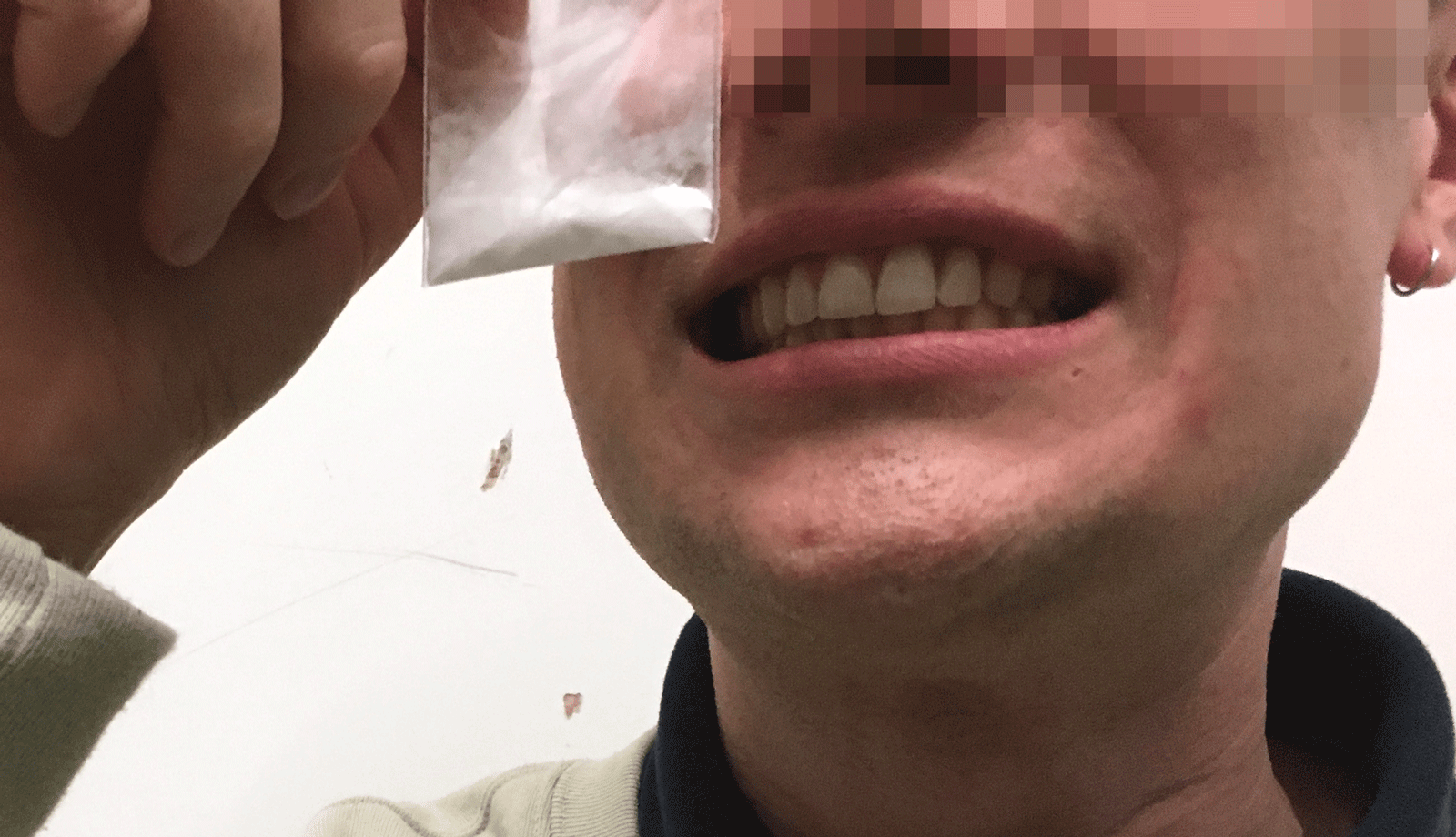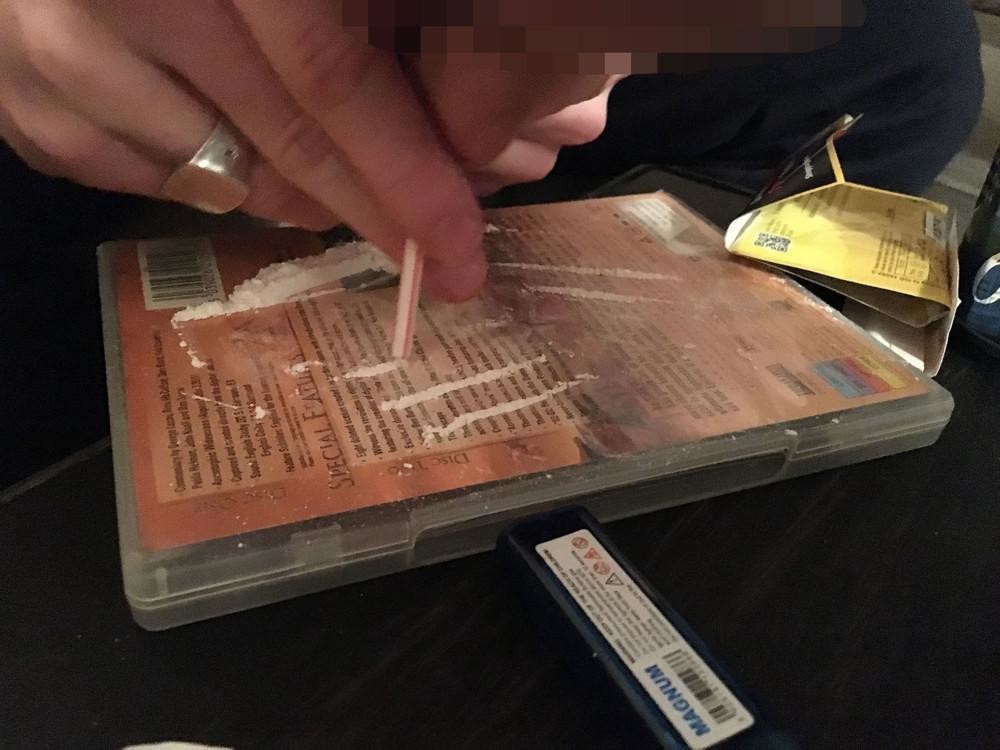This article originally appeared on VICE UK.
It was an icy Friday evening in February, 2010, in the midst of the Great British Mephedrone Epidemic. The heater in my pokey halls room at the University of Bristol was on full blast, and grime banged out of a cheap pair of speakers. Three of us, all first years, formed an assembly line, using our student bank cards to chop 50 grams of "drone" into rough 1g mounds, before folding them into wraps and weighing them on scales. Glugging from vodka mixed with fruit juice, I remember snorting lines off my Economics textbook. Within minutes of sending out text messages advertising "CHEAP DRONE FOR £9 [$11]," a line formed at my door. Within two hours we'd sold it all.
We ventured out into the quad next to my accommodation block, and all I could see in the cold, misty smoking area was a mass of students completely off their heads, all on the same dirt-cheap powder. Despite near-freezing conditions, nobody was wearing coats because everyone was artificially warm from the drone. People were snorting it off any surface they could find.
We piled into cabs to head to a grimy bar in the city, and it was the same scene there: everyone was gurning. People kept tapping me on the shoulder asking me if I had any more, while dealers walked purposefully around the club, offering cheap wraps, their eyes as googly as everyone else's. Making our way home, we stopped off at a couple of house parties. Powder that smelled like cat piss was being racked into lines and offered around on plates and books like after dinner chocolates.
Back in my room, it was almost daylight and the birds were tweeting. I closed my eyes and tried to sleep, but heard a knock on my door: Someone returning from their night out, begging desperately for more drone. When I woke up the next afternoon, I discovered that one of my friends had pissed himself all over my carpet. Then I sat in silence as condensation dripped down my window.

Never has a drug blind-sided the authorities or sparked such a deluge of unfettered use so quickly as mephedrone did a decade ago. In an era of fake drug epidemics, mephedrone was a bonafide drug craze, a narcotic landmark that most young people at the time still talk about. Known to users as mcat, drone, meph (or "meow meow," if you're a Daily Mail reader), it was the drug—alongside Spice (synthetic weed)—that opened the floodgates to the global online drug market that thrives today.
Because it was cheap, legal, and easy to get hold of over the internet, it was the ultimate democratic high. The mephedrone craze touched swathes of young people across Britain, from universities to rural backwaters. As a result, mephedrone defined the drug-taking experiences for tens of thousands of young people—and not in a particularly good way; mephedrone quickly became known for its moreish nature, and its dark, crisis-inducing comedowns.
There were some students in my year who'd already experimented with cocaine, ketamine, or MDMA during their gap year or during the summer vacation before college. They saw drone as further harmless experimentation. But there were those of us like me who had never ventured beyond alcohol or weed before, who were quickly tempted to try drone because it was both legal and so readily available. This incubated a soaring demand for the new party drug.
Oddly, it all happened as the result of a ripple effect generated by distant forces on the other side of the world. In June of 2008, the Cambodian government found and destroyed 33 tons of safrole, a key ingredient in MDMA, which strangled global production. So much so that, by 2009, most ecstasy pills in the UK contained zero MDMA, and instead were packed with a less enjoyable synthetic stimulant, BZP. At the same time, cocaine supply into the UK also thinned, and purity nosedived. Enter mephedrone, a super cheap cathinone that colonized the gap in the market. Unlike its illegal, expensive rivals, mephedrone not only got people high, but was totally legal and could be ordered online, disguised as "plant food" in the UK and "bath salts" in the US. It was an opportunity for thousands of British teenagers, college students, and clubbers grabbed with both hands.
I ordered mephedrone for the first time, online, with a friend not long after freshman year began in October of 2009. We couldn’t believe it was legal and that you didn’t have to get it off a dealer. We’d heard that people at other schools were on it, from Newcastle in the north to Brighton in the south, and wanted to see what the fuss was about. It was exciting. The drone revolution reached every part of the country: friends from Birmingham to East Anglia, York to London, became immersed in the same patterns of obsessive drone consumption.
Professor Judith Aldridge, a criminologist at the University of Manchester who specializes in drug markets, found in a study published in 2010 that well over half of students at her university had tried mephedrone. She says the structure of college dorms—close-knit warrens of un-policed corridors filled with young adults with student loans to burn—allowed for drone's seamless takeover in British universities. Hyperlocal mephedrone markets spawned where demand was highest: the pre-drinks, raves, house parties and pubs frequented by students.
Within weeks of the craze catching on, my phone was full of numbers I could text at any time to get drone delivered to my door in minutes, off dealers with online names like Dial a Drone. Because it was legal, it turned hundreds of university students around the country into drug sellers. They ranged from people buying 20 to 50 grams, like we did—to use themselves and sell to other students in their dorm—to others buying hundreds of grams at a time, who would hop from party to party, club to club, offering wraps to anyone they saw gurning.
Many of the dealers were my neighbors or class mates. The drug's booming availability drove the price rapidly downward, and among social groups like mine—who were actively exploring Bristol’s live music scene—drone was nearly as prevalent as alcohol. People would sprinkle it in their drinks or spend half their night in bathroom stalls snorting it. One Bristol University student union newsletter even recommended it, saying mephedrone was the perfect mix between cocaine and MDMA, and was completely legal. But by Christmas of 2009, things started to get weird at Britain’s universities.
What started as a line-or-two habit quickly turned into a lifestyle. This downward spiral hinged upon drone's brutal comedown, from which the only escape was simply to do more. Everyone I’ve spoken to about that era says the same thing, in the same regretful tone: You did a bit, and then you needed more, and more, and more. Encouraged by the fact that first year exam results don’t count toward final degree grades, this trend of mass addiction was masqueraded as justifiable. As winter deepened and days got darker, I remember receiving texts and Facebook messages from school friends scattered across other universities about how the drug had taken over their social groups.
We were like spoilt kids in a cheap, guilt-free sweet shop. By early 2010, in the more extreme cases, plenty of people would consume drone for days on end, buying gram after gram. Excessive use might make your nose bleed at random, or scorch your throat, leaving an acidic twang when you swallowed, which made it impossible to concentrate in lectures or enjoy your lunch the next day. Many students began neglecting their work, losing the motivation to attend class, forgetting to eat meals, and becoming obsessed with getting their next fix. Doing drone became an end in itself. For me, this addictive characteristic separates it from other highs. Ecstasy and cocaine would have been enjoyed more reservedly were it any other year.

When I asked friends earlier this year to recall stories from that time, most of them came back with tales told with wincing groans. One said he would consume big lines of drone with his roommate and go for long walks through the night around residential streets and parks in south London. Another friend, who attended school in Aberystwyth, a windy coastal town in Wales, says she once spent all her cash on getting drone delivered, but didn’t want to leave her warm house to get food, so managed to make a single cauliflower last for three days while sustaining her drone bender. What adds to the retrospective darkness of these experiences is that everyone’s stories are set in wintry conditions. The short, sharp peak of the drug's reign lasted for exactly one season.
As winter came to a close, accounts started to circulate of people being hospitalized after passing out in the cold after a night out, or stealing from their parents to uphold their habit, or in some cases even dying because of the potent combination of excessive drone use and binge-drinking. But not every person around me in Bristol who was consuming the drug was ruining their life. It was more that drone seemed to be leading a huge proportion of privileged young people to believe that this most pointless and mind-numbing activity was worthwhile. That chasing an up-and-down cycle of intoxication for the sake of it, despite the multitude of cons from doing so, was a rewarding act. It was a drug epidemic, contained by the protective cushioning of a complacent class bubble.
By April of 2010, there was a growing consensus among people in my social group that it was best to start easing off. The toll it was taking on our energy levels and peace of mind became clear as the worst abusers of the drug started socially excluding themselves. Exams were fast approaching, and a media frenzy about the potential dangers of the drug generated a moral panic. In a step headed by a pre-general election Labour government, drone was made illegal.
By the summer of 2010, the meph craze started to recede from the colleges and universities, and instead found a new base among older users, including the street homeless and speed injectors. It was as if drone's grip on so many lives had been imagined. Now, nearly a decade later, still classified as a class B drug, it has something of a mythological status among people my age. Whenever I speak to those who experienced it during that specific window of time, they, like me, look back in confusion on incidents that should not belong to the hopeful prime of young adulthood.
"Mephedrone was like a viral drug. It was a snortable meme, a downloadable hit for a generation used to buying everything online, and the media frenzy fed into that," says Mike Power, author of Drugs 2.0: The Web Revolution That's Changing How the World Gets High. "By opening up the online trade to the masses, it changed the global drug trade for good. It led to the proliferation of dark web drug markets, and ultimately the rise of Chinese underground labs making everything from synthetic cannabinoids to fentanyl."
The drone phase of our lives was one of rebellion and escapism. It thrived at a large variety of universities, but also with teenagers and young adults. People were hooked on it in all corners of the UK: from bored teenagers in impoverished countryside villages to office workers in the skyscrapers of major cities. The arrival of mephedrone was like a huge human lab experiment that asked, "What would happen if a cheap, legal, potent stimulant was to be made easily available to young people in Britain?" The answer, a decade ago, was clear.
James Berry is a pseudonym
Sign up for our newsletter to get the best of VICE delivered to your inbox daily.
from VICE https://ift.tt/2EfddiB
via cheap web hosting
No comments:
Post a Comment